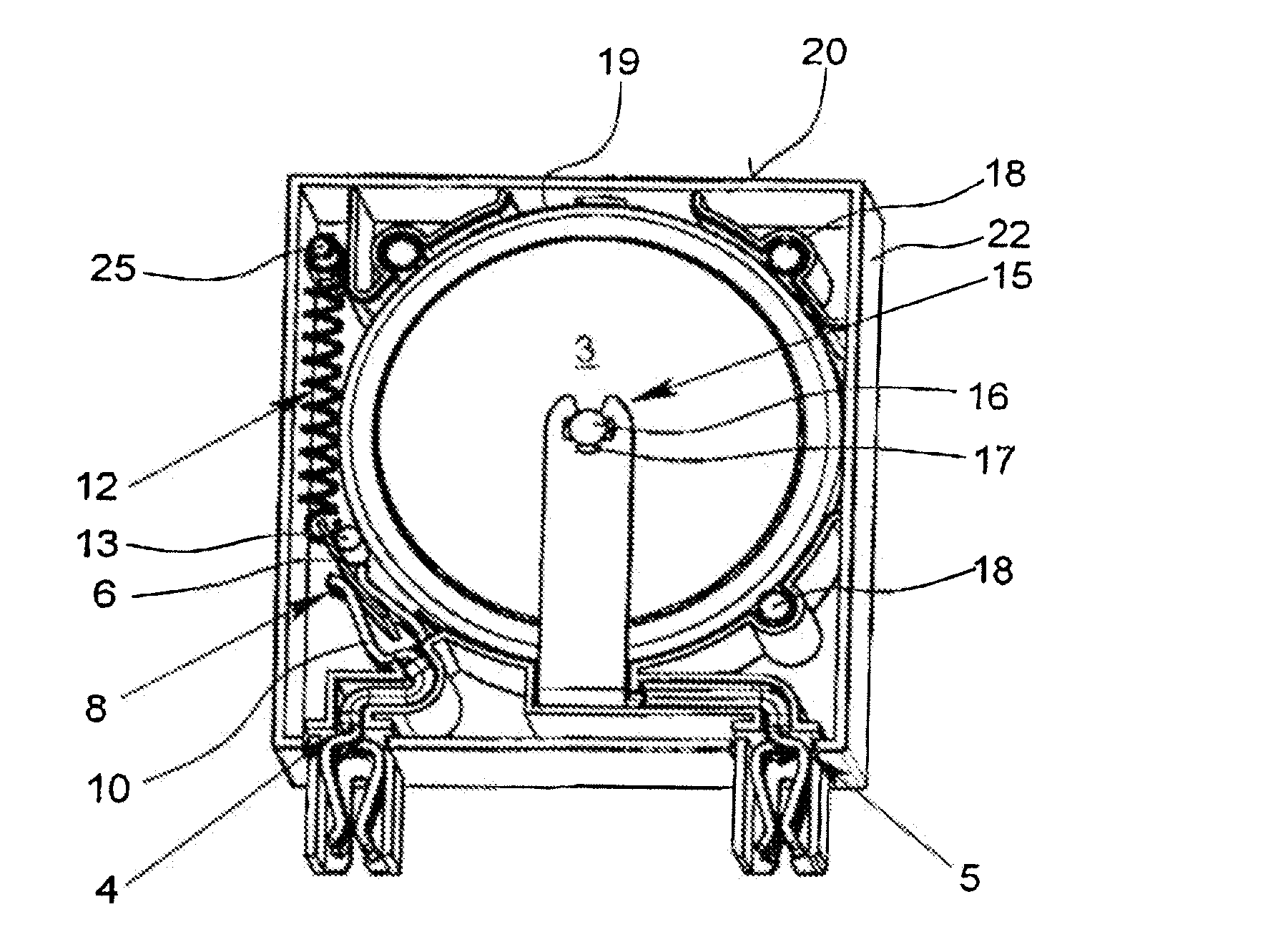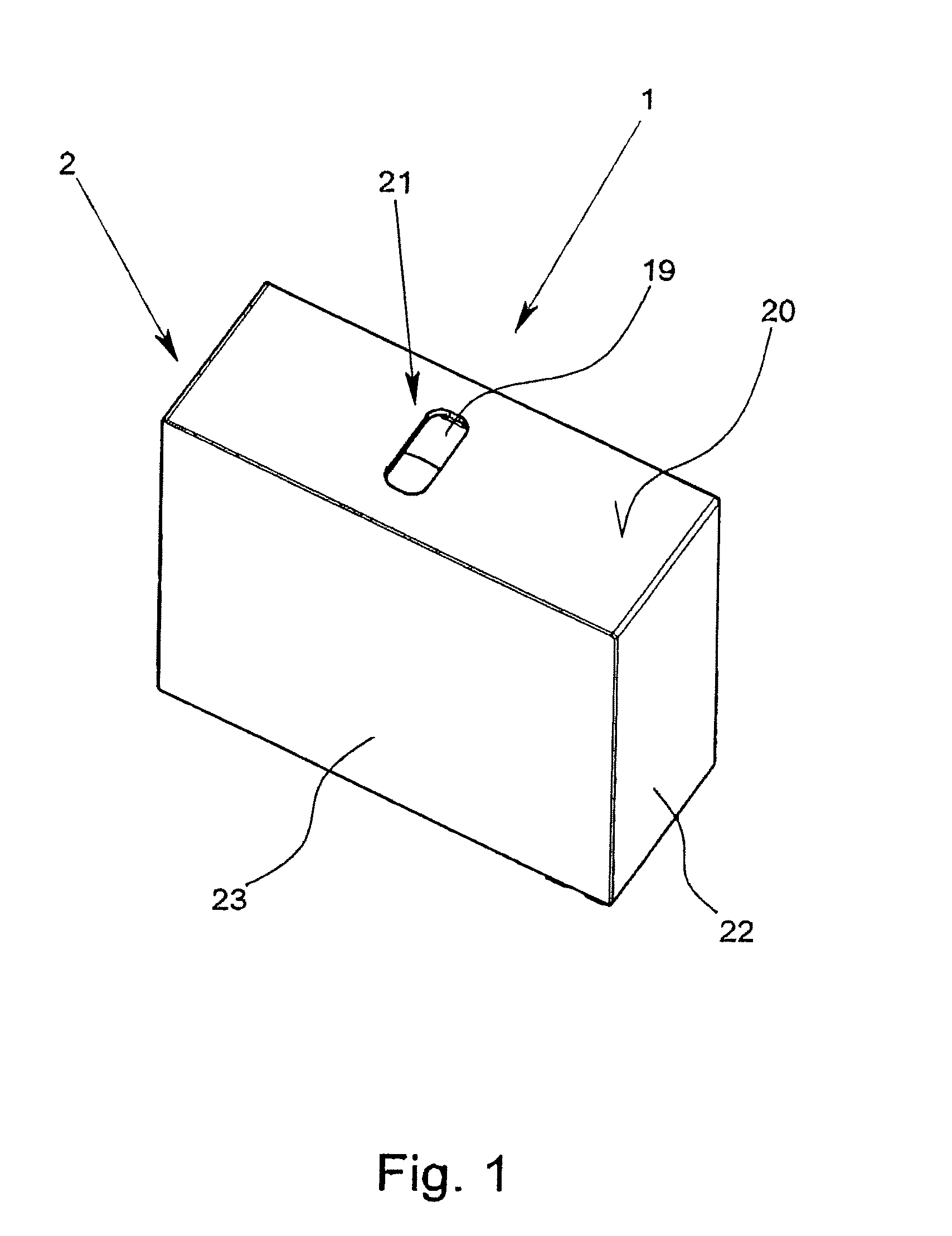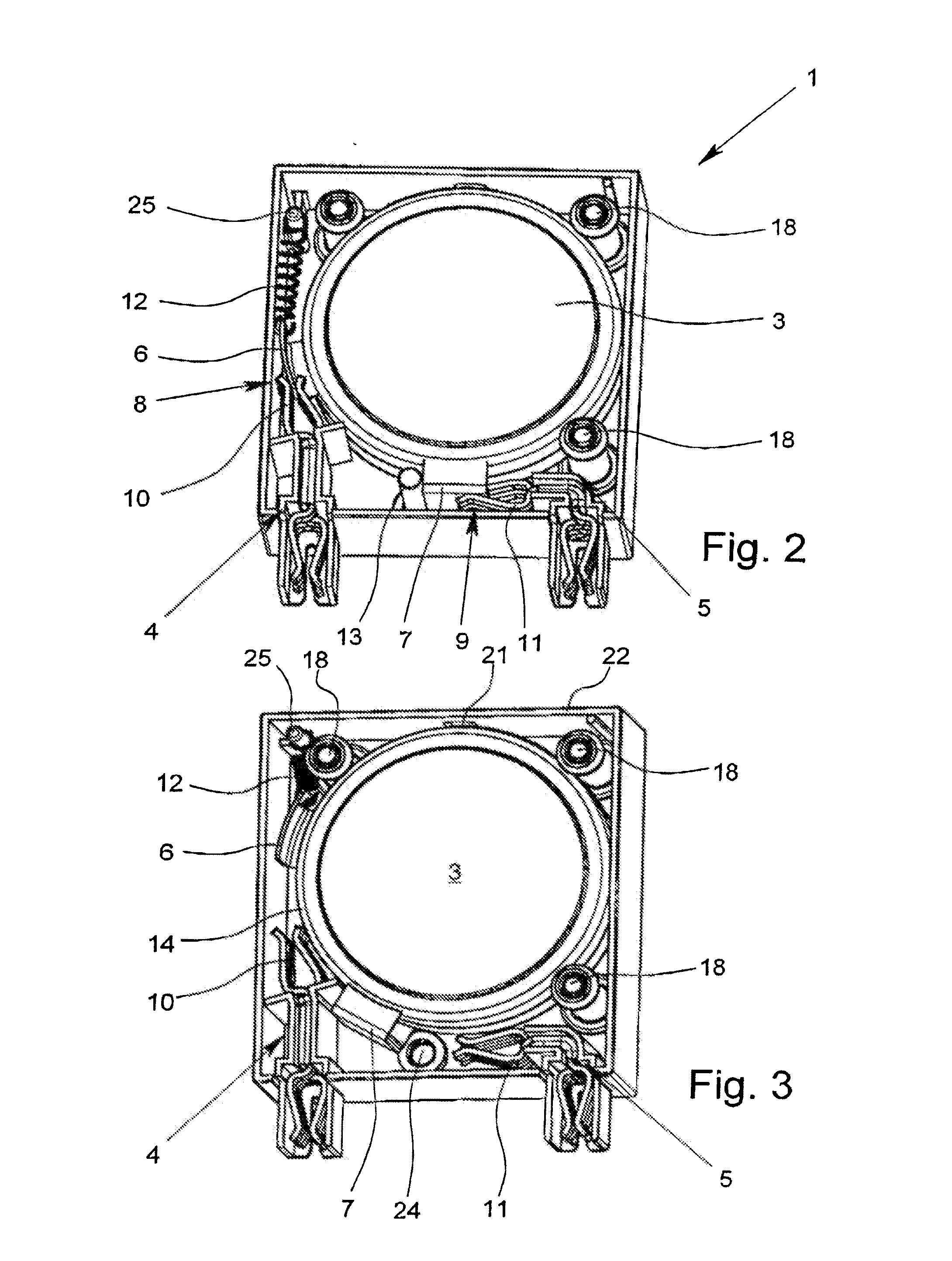Overvoltage protection element
a protection element and overvoltage technology, applied in the direction of emergency protective arrangements for limiting excess voltage/current, spark gap details, arrangements responsive to excess voltage, etc., can solve the problems of solder connection melting and solder connection continuously loaded with shear stress, and achieve reliable and good electrical connection
- Summary
- Abstract
- Description
- Claims
- Application Information
AI Technical Summary
Benefits of technology
Problems solved by technology
Method used
Image
Examples
Embodiment Construction
[0028]The figures show an overvoltage protection element 1 with a housing 2 in the which there is an overvoltage limiting component 3. In the illustrated exemplary embodiments, the overvoltage limiting component is a varistor 3; alternatively, for example, a gas-filled surge arrester can also be used as an overvoltage limiting component 3. The overvoltage protection element 1, which is made as a “protective plug”, has two connecting elements 4, 5 which are made as sockets and which can be plugged onto the corresponding plug pins of the lower part of the device (shown here).
[0029]In the exemplary embodiment as shown in FIGS. 2 and 3, the two poles of the varistor 3 are each connected to a terminal lug 6, 7. In the normal state of the overvoltage protection element 1, the varistor 3 is connected to the two connecting elements 4, 5 via the two terminal lugs 6, 7. The connection between the two terminal lugs 6, 7 and the two connecting elements 4, 5 follows by way of a plug-and-socket c...
PUM
 Login to View More
Login to View More Abstract
Description
Claims
Application Information
 Login to View More
Login to View More - R&D
- Intellectual Property
- Life Sciences
- Materials
- Tech Scout
- Unparalleled Data Quality
- Higher Quality Content
- 60% Fewer Hallucinations
Browse by: Latest US Patents, China's latest patents, Technical Efficacy Thesaurus, Application Domain, Technology Topic, Popular Technical Reports.
© 2025 PatSnap. All rights reserved.Legal|Privacy policy|Modern Slavery Act Transparency Statement|Sitemap|About US| Contact US: help@patsnap.com



